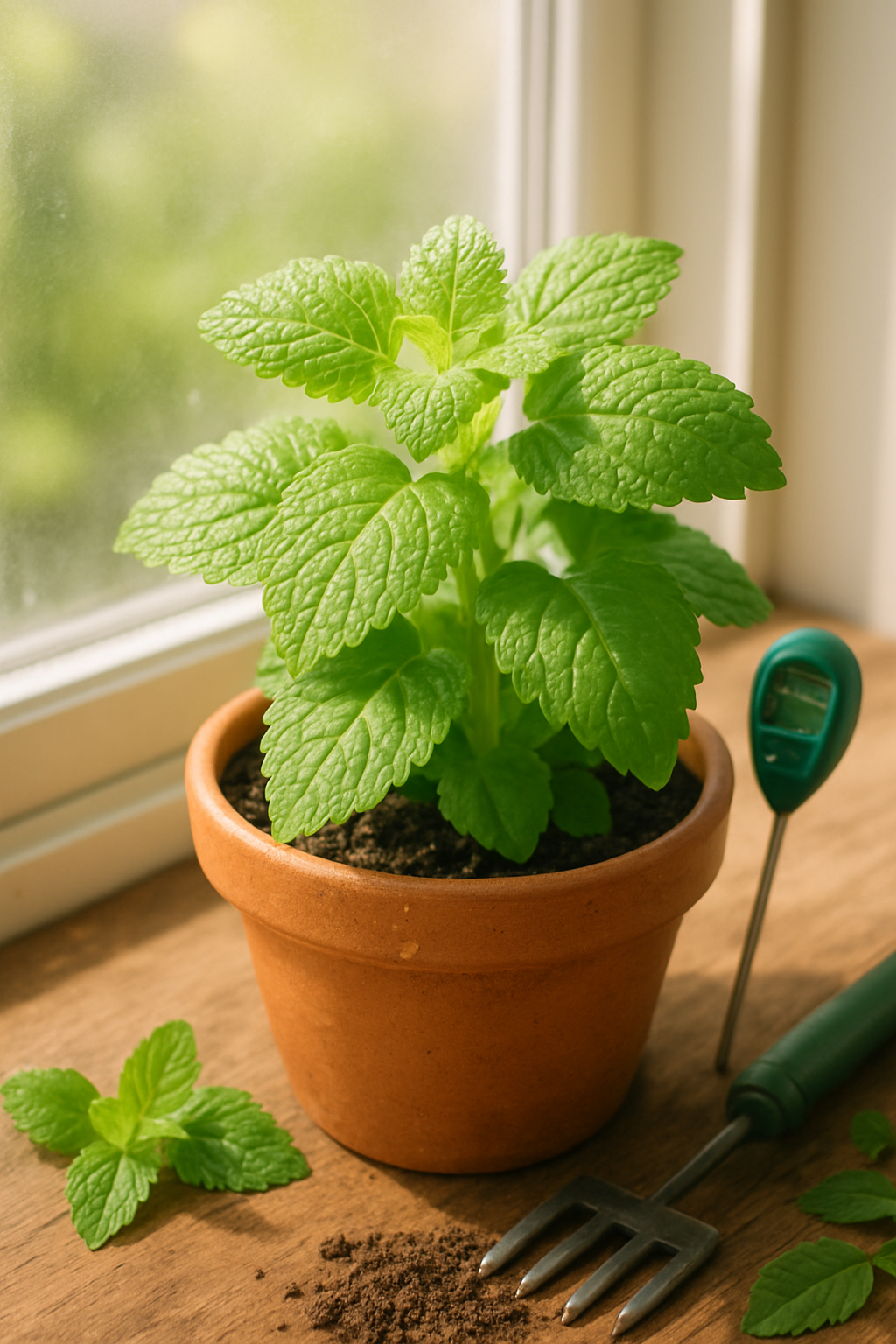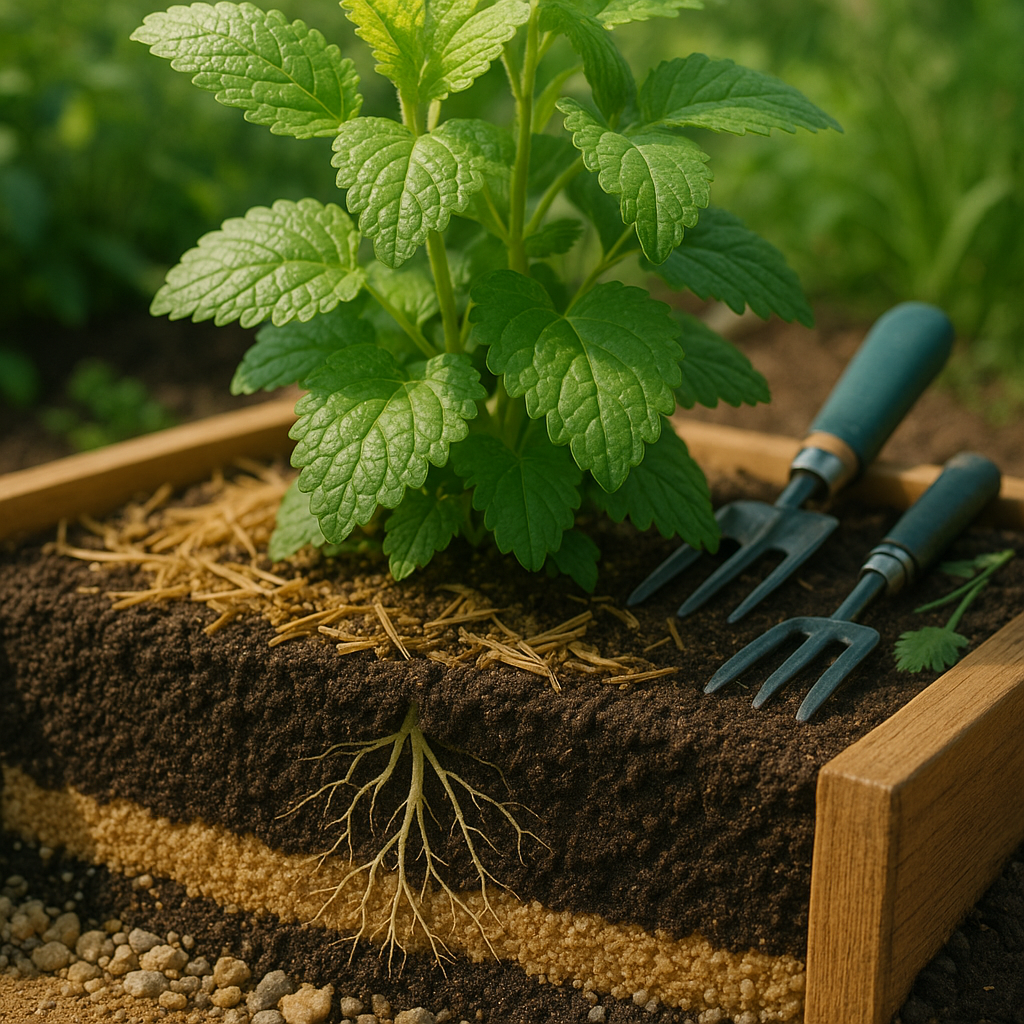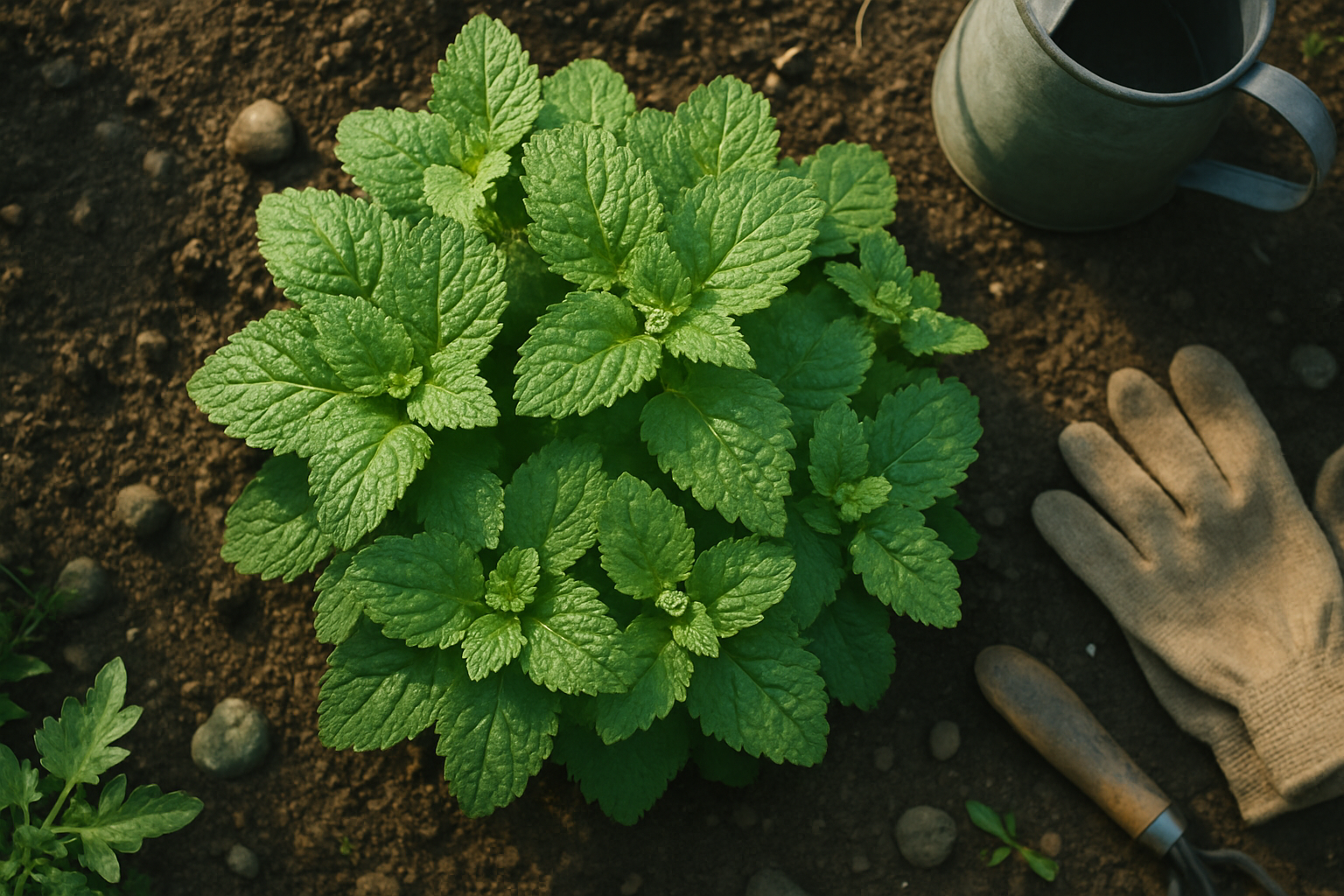Introduction to Lemon Balm & Its Watering Needs

Watering lemon balm is a simple task that can make a world of difference in the health and flavor of this beloved herb. Lemon balm, with its bright green leaves and subtle citrus scent, has become a popular choice for home gardeners seeking a hardy, fragrant, and versatile plant.
Whether you’re growing it for soothing teas, kitchen recipes, or pollinator-friendly borders, lemon balm thrives when its basic care needs—especially watering—are met consistently. Proper watering isn’t just about keeping the plant alive; it’s crucial for developing lush foliage and preserving that signature lemony aroma.
Too much or too little moisture can stunt growth, affect oil production, and lead to lackluster flavor. Seasoned gardeners know that even hardy herbs like lemon balm have particular preferences, and understanding these can transform average plants into thriving, vigorous patches.
In this article, you’ll discover when, how, and how often to water lemon balm, along with practical tips you can use whether your plants are in containers, garden beds, or indoor pots. If you’re aiming for a vigorous, aromatic plant bursting with fresh flavor, keep reading for straightforward watering guidelines that really work.
Understanding Lemon Balm’s Growing Conditions
Lemon balm thrives best in full sun to partial shade, flourishing in temperatures between 60°F to 80°F (15°C to 27°C), and prefers moderate humidity—making it adaptable for many home gardeners.
For vibrant, healthy plants, pick a spot where your lemon balm gets at least five hours of sunlight each day. In hotter climates, a little afternoon shade can help prevent leaf scorch. Outdoor plants generally need more watering during dry spells, as both wind and direct sunlight quickly dry out the soil.
Indoor lemon balm prefers a bright windowsill away from cold drafts or air conditioning. Because indoor air is often drier (especially in winter), watch for quick soil drying. When growing lemon balm in containers, soil can dry out quite rapidly, so check moisture levels every few days by sticking your finger an inch into the soil—if it feels dry, it’s time to water.
Remember, overwatering is just as harmful as underwatering; soggy roots can cause wilting and yellowing. Outdoor in-ground plants need less frequent watering, especially once established, while container and indoor plants typically require more attentive, regular checks.
Adjust your watering routine with the seasons: hot, sunny weather or indoor heating can mean more frequent watering, while cooler or damp conditions slow water evaporation. By tuning into these environmental cues, you’ll help your lemon balm stay lush and thriving wherever you grow it.
How Often to Water Lemon Balm
Watering lemon balm properly is key to ensuring healthy, vigorous growth, but how often you should water depends largely on where and how your plant is growing.
For lemon balm planted directly in the ground outdoors, water deeply about once a week during warm months. Adjust this based on rainfall or heat waves—if the top inch of soil feels dry, it’s time to water.
Outdoor lemon balm in pots dries out faster, so check soil moisture every couple of days. Typically, watering two to three times a week works well in summer, though windy spots or small pots might need even more frequent attention.
Indoor lemon balm needs less frequent watering since household environments tend to be less drying. Water when the top half-inch of soil is dry, usually every seven to ten days, but always adjust based on the season and indoor climate.
In spring and summer, when lemon balm is growing actively, water more often. In fall and winter, growth slows down, so let the soil dry out more between waterings. Once every two weeks might be enough indoors during cooler months.
Signs Your Lemon Balm Needs Water
- Wilting leaves
- Drooping stems
- Soil pulling away from the pot’s edge
Signs of Overwatering
- Yellowing leaves
- Mushy stems
- Persistent musty smell from the soil
Consistently soggy soil is a big red flag—lemon balm enjoys moisture but cannot tolerate waterlogged roots. To avoid problems, use your finger to test soil moisture or lift potted plants periodically to feel if they’re unusually light (dry) or heavy (wet).
Adjust your watering routine as the weather changes, and remember—it’s much easier to rescue a slightly dry lemon balm than one suffering from root rot caused by overwatering.
Soil and Drainage

The type of soil you use plays a crucial role in keeping your lemon balm healthy and thriving. Well-draining soil is key to preventing water stress and root rot—two common problems that can quickly harm your plants.
Heavy clay soils tend to retain too much water, suffocating the roots, while sandy soils drain too fast, leaving lemon balm thirsty. A balanced approach is best: mix two parts high-quality potting soil with one part coarse sand or perlite to boost drainage and ensure moisture doesn’t pool around the roots. Adding organic matter like compost or aged manure helps retain the right amount of moisture while also supplying nutrients.
To test if your soil has the right moisture balance, stick your finger about an inch deep into the soil; if it feels dry, it’s time to water, but if it feels damp, hold off. For an even easier check, use a basic soil moisture meter.
Mulching can also work wonders. Add a layer of straw, bark chips, or shredded leaves around your lemon balm to slow evaporation, keep the roots cool, and maintain consistent soil moisture. Just be sure not to pile mulch against the stems to avoid trapping excess moisture at the base.
By paying attention to soil composition, drainage, and moisture testing, you’ll create the optimal environment for your lemon balm to flourish without the risks of overwatering or drought stress.
Common Problems Related to Watering Lemon Balm
Watering lemon balm might seem simple, but it’s easy to encounter issues that affect your plant’s health. One common sign of trouble is yellowing leaves, which usually indicate the plant is getting too much water. To fix this, let the soil dry out between waterings and make sure your pot has proper drainage holes.
Wilting can be confusing because it occurs with both overwatering and underwatering. Check the soil moisture by sticking your finger an inch below the surface—if it’s dry, give your lemon balm a good drink; if it’s soggy, back off and allow the roots to breathe.
Root rot is a more serious problem, often caused by constantly wet soil. Look for black, mushy roots or a foul smell. If you spot this, trim away the affected roots and repot the plant in fresh, well-draining soil.
Stunted growth, where the plant just won’t thrive, also points to inconsistent watering or root damage. Stick to a regular watering schedule—typically once or twice a week—adjusting as needed based on the season and your indoor climate.
Using a moisture meter or monitoring the top inch of soil helps prevent over- or underwatering. Remember, lemon balm prefers evenly moist but not soaked soil. A little care and attention to your watering habits can make all the difference in keeping your herb lush and healthy.
Extra Tips for Thriving Lemon Balm
For thriving lemon balm, consistency is key—especially with watering. Aim to water in the early morning, allowing leaves to dry by evening and reducing the risk of fungal issues. Lemon balm enjoys even moisture but dislikes soggy roots, making bottom watering a smart option.
Place the pot in a tray of water for about 30 minutes, letting the plant soak moisture up from the base; this encourages deeper root growth and prevents splashing soil on leaves. Rainwater is preferred over tap water, as it lacks the chlorine and minerals that can build up in the soil and stunt plant health. If rainwater isn’t available, let tap water sit overnight before use to let chemicals dissipate.
Fertilize sparingly—once a month during spring and summer with a balanced liquid fertilizer—since too much can stimulate lush leaves but dilute their signature lemony flavor. Lighter feeding also means you won’t have to water as often, as over-fertilized plants tend to dry out faster.
As the plant fills out, harvest leaves regularly by pinching stems above leaf nodes; this habit encourages bushy growth and keeps flavor at its peak. Remove any flower buds as soon as they appear, since flowering can make leaves taste bitter.
By combining mindful watering, selective feeding, and steady harvesting, your lemon balm will reward you with robust, aromatic leaves all season.
Conclusion & Quick Reference Guide
Finding the right watering routine is key to a thriving garden. Most gardens need about one inch of water per week, but factors like soil type, weather, and plant variety can shift this guideline. Watch for warning signs—wilting, yellowing leaves, or dry soil mean your plants may be thirsty, while soggy soil and root rot signal overwatering. The best strategy is to use these signs and adjust watering to your own garden’s needs, rather than relying on a fixed schedule. Every garden is unique, so regular observation is essential.
Quick Reference Cheat Sheet:
- Check soil moisture before watering.
- Water early in the morning for best absorption.
- Deep, infrequent watering encourages strong roots.
- Adjust frequency after heavy rains or extreme heat.
- Use mulch to retain soil moisture.
- Signs of under-watering: wilting, dry soil.
- Signs of overwatering: yellowing, mushy stems, fungal growth.
- Always tailor your approach to your garden’s conditions.
